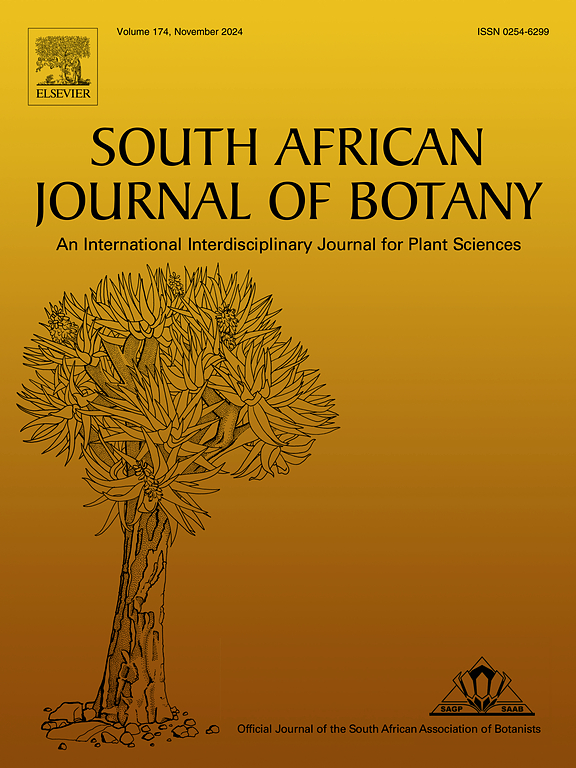Assessing different storage temperatures and protocols for preserving seeds and nodal explants of the African leafy vegetable, Amaranthus dubius
IF 2.7
3区 生物学
Q2 PLANT SCIENCES
引用次数: 0
Abstract
This study investigated the response of seeds and nodal explants of the highly nutritious African leafy vegetable (ALV), Amaranthus dubius, to multiple cryopreservation protocols (controlled-rate cooling, liquid nitrogen (LN) immersion, and LN slurry (semi-solid mix of liquid and frozen nitrogen) immersion) and storage temperatures (24 (room temperature), 4 (fridge), -20 (freezer), -80 (ultrafreezer), -148 (LN vapour) and -196 °C (LN)). This study revealed that A. dubius seeds can be stored for 4 years at -20 and -80 °C without significantly decreasing germination capacity (86 and 88 %, respectively) compared to the non-stored control (92%). Cooling seeds at a controlled rate was found to be optimal in maintaining seed viability, irrespective of storage temperature. Controlled-rate cooling was also optimal for nodal explants across storage temperatures (-20, -80, -148, and -196 °C), which, when multiplied in vitro, yielded 3.6 ± 0.6 shoots per explant with an 80 % shoot development rate. To assess the effect of these treatments on genetic fidelity, a previously identified salinity tolerant A. dubius genotype, expressing a Na+/H+ exchanger (NHX1) gene, was stored, and the relative expression of the NHX1 transcript was quantified in root tissues post-acclimatisation. Nodes that were cooled at a controlled rate, in LN slurry, or in LN, maintained genetic fidelity better than those of the control, based on the relative expression of the NHX1 marker gene.
评估非洲叶菜苋菜种子和结节外植体的不同储存温度和保存方案
本研究研究了营养丰富的非洲叶菜苋菜(Amaranthus dubius)的种子和结块外植体对多种低温保存方案(控制速率冷却、液氮(LN)浸泡、液氮浆(液态和冷冻氮的半固态混合物)浸泡)和储存温度(室温24℃、冰箱4℃、冷冻机-20℃、超冷冻机-80℃、液氮蒸气-148℃和-196℃)的响应。结果表明,在-20°C和-80°C条件下贮藏4年,豆芽萌发率(86%)和豆芽萌发率(88%)较未贮藏的豆芽萌发率(92%)显著降低。研究发现,无论储存温度如何,以受控速度冷却种子对保持种子活力最有利。节点外植体在-20、-80、-148和-196°C的不同储存温度下,控制速率冷却也是最佳的,在体外繁殖时,每个外植体产生3.6±0.6个芽,芽发育率为80%。为了评估这些处理对遗传保真度的影响,我们储存了一种先前鉴定的耐盐双双鱼基因型,该基因型表达Na+/H+交换器(NHX1)基因,并在驯化后量化了NHX1转录本在根组织中的相对表达。根据NHX1标记基因的相对表达,以控制速率、LN浆液或LN冷却的节点比对照组保持了更好的遗传保真度。
本文章由计算机程序翻译,如有差异,请以英文原文为准。
求助全文
约1分钟内获得全文
求助全文
来源期刊

South African Journal of Botany
生物-植物科学
CiteScore
5.20
自引率
9.70%
发文量
709
审稿时长
61 days
期刊介绍:
The South African Journal of Botany publishes original papers that deal with the classification, biodiversity, morphology, physiology, molecular biology, ecology, biotechnology, ethnobotany and other botanically related aspects of species that are of importance to southern Africa. Manuscripts dealing with significant new findings on other species of the world and general botanical principles will also be considered and are encouraged.
 求助内容:
求助内容: 应助结果提醒方式:
应助结果提醒方式:


